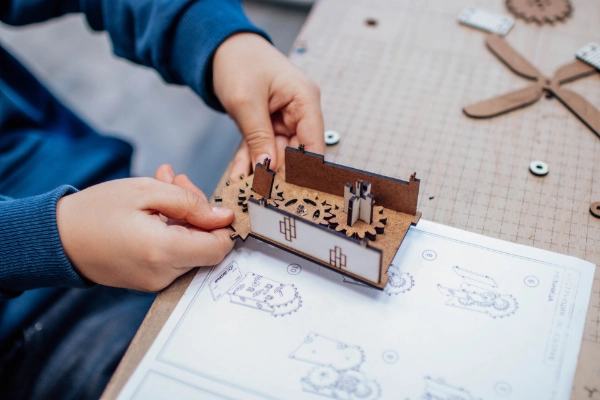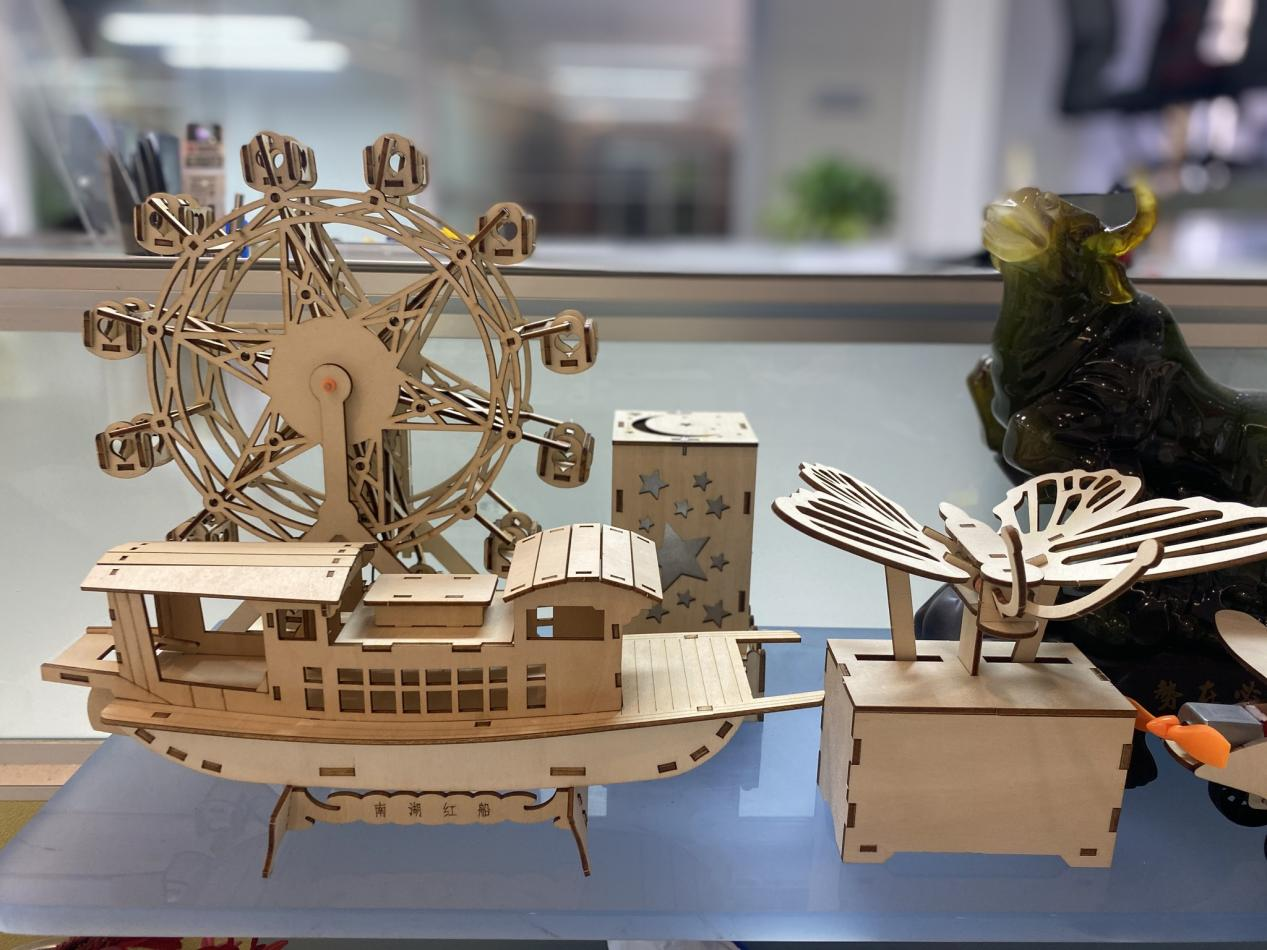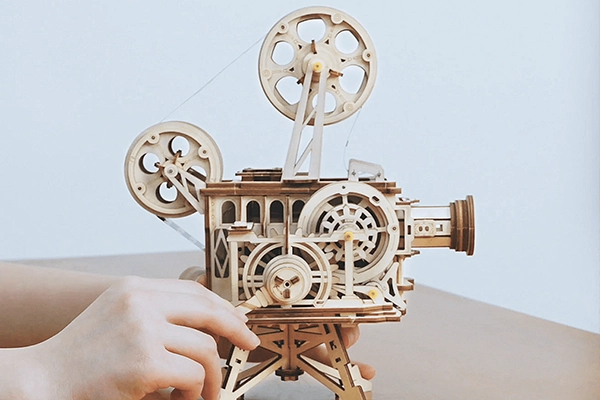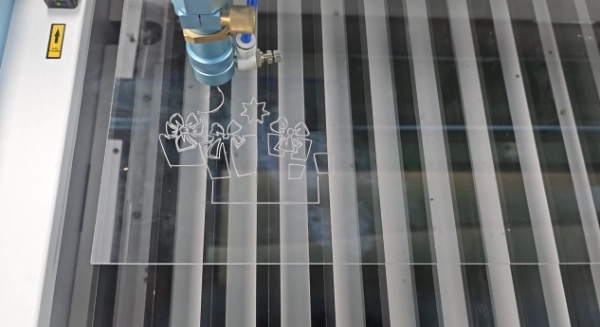Significance of Smart 3D Wood Laser Cutter for Schools in Education
Laser engraving cutting machine enhances the learning experience and cultivates students' creativity. It is an important way for students to participate in design, engineering and hands-on learning. In this blog post, Good-Laser, as a high performance CO2 laser cutter for steam education supplier, will share the significance of smart 3D wood laser cutter for schools in student education. By integrating laser engraving cutting machine into the educational environment, schools can provide a rich learning environment and cultivate innovative and practical skills.
Bridging the Gap Between Theory and Practice
Traditional classroom instruction often emphasizes theoretical knowledge, leaving limited room for practical application. Smart 3D wood laser cutters bridge this gap by allowing students to transform their ideas into tangible projects. This hands-on approach reinforces classroom concepts in subjects such as mathematics, science, and art. For instance, students learning about geometric shapes can design and cut intricate models, enhancing their spatial understanding and problem-solving skills.
Moreover, using smart 3D wood laser cutters promotes experiential learning. This form of education encourages students to experiment, analyze outcomes, and refine their work, fostering a growth mindset. By working through the iterative design process, students gain a deeper comprehension of core academic subjects while developing essential 21st-century skills, including critical thinking and collaboration.
Fostering Creativity and Innovation
One of the most significant benefits of integrating smart 3D wood laser cutters into schools is their ability to unleash creativity and innovation. Students can bring their imaginations to life by designing and fabricating custom pieces, from intricate art installations to functional prototypes. This creative freedom inspires a sense of ownership and pride in their work.
Additionally, the versatility of smart 3D wood laser cutters encourages interdisciplinary learning. For example, a history project might involve recreating architectural models of ancient civilizations, while a science class might design and cut prototypes for environmental solutions. This cross-disciplinary approach fosters holistic learning and empowers students to see connections between diverse fields of study.
Preparing Students for Future Careers
As industries evolve, the demand for skilled professionals with expertise in digital fabrication continues to grow. By exposing students to smart 3D wood laser cutting technology, schools can equip them with valuable technical competencies that are highly sought after in fields such as engineering, architecture, and product design.
Early exposure to this technology also familiarizes students with computer-aided design (CAD) software and precision manufacturing processes. These experiences provide a competitive advantage when pursuing higher education or entering the workforce. Furthermore, students who develop proficiency in using smart 3D wood laser cutters are better prepared to navigate the increasingly digital and automated job market.

Enhancing Problem-Solving and Critical Thinking Skills
Smart 3D wood laser cutters require students to engage in problem-solving and critical thinking throughout the design and production process. From conceptualizing an idea to refining the final product, students must navigate technical challenges, troubleshoot errors, and adapt their designs. This iterative process fosters resilience and the ability to approach complex problems systematically.
Additionally, the precision and attention to detail required by smart 3D wood laser cutters cultivate patience and perseverance. Students learn to balance creativity with technical accuracy, a skill set that is invaluable across all disciplines. These experiences not only enhance academic performance but also prepare students for real-world problem-solving scenarios.
Promoting Collaborative Learning
The implementation of smart 3D wood laser cutters in schools encourages collaborative learning environments. Students often work in teams to conceptualize, design, and execute projects, fostering communication and teamwork skills. This collaborative approach mirrors professional settings, where multidisciplinary teams work together to develop innovative solutions.
Moreover, collaborative projects with smart 3D wood laser cutters promote peer-to-peer learning. Students with advanced knowledge of the technology can mentor their peers, creating a supportive learning community. This exchange of ideas and expertise enhances the educational experience and encourages lifelong learning.
Supporting Inclusive Education
Smart 3D wood laser cutters can play a pivotal role in supporting inclusive education. These tools accommodate diverse learning styles by providing tactile and visual learning experiences. Students who may struggle with traditional instructional methods can thrive in hands-on, project-based environments.
Furthermore, smart 3D wood laser cutters can be adapted to support students with disabilities. For example, visually impaired students can create tactile models to explore spatial concepts, while students with fine motor challenges can use the technology to produce precise and intricate designs. This adaptability ensures that all students have equitable access to advanced learning opportunities.
Encouraging Environmental Awareness
Incorporating smart 3D wood laser cutters into the curriculum also offers opportunities to teach environmental responsibility. Students can explore sustainable design practices by using eco-friendly materials and minimizing waste through efficient cutting techniques. This awareness of sustainable manufacturing fosters a sense of environmental stewardship and encourages students to consider the long-term impact of their creations.
Moreover, schools can implement recycling programs where wood scraps generated by laser cutting projects are repurposed for future use. This initiative not only reduces waste but also reinforces the importance of resource conservation in modern manufacturing processes.
Conclusion
The significance of smart 3D wood laser cutters for schools in student education cannot be overstated. These innovative tools bridge the gap between theory and practice, foster creativity and innovation, and prepare students for future careers. They enhance problem-solving and critical thinking skills, promote collaborative learning, and support inclusive education. Additionally, smart 3D wood laser cutters provide a platform to instill environmental awareness and sustainable design practices.
By investing in smart 3D wood laser cutting technology, schools can provide students with the skills and knowledge they need to succeed in an ever-evolving world. As education continues to embrace technological advancements, the integration of these cutting-edge tools will play a vital role in shaping the future of learning and empowering the next generation of innovators and problem solvers.




